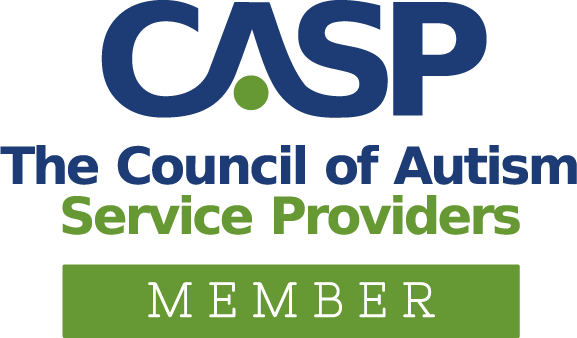Table of Contents
Why children with autism are at a higher risk of drowning?
Learning how to swim is an important life skill that all individuals should have, including children with autism spectrum disorder (ASD). Whether participating in water activities or enjoying a family vacation, ensuring water safety for kids on the spectrum is a critical concern that parents, caregivers, and educators must address.
In recent years, there has been an alarming increase in incidents involving children with autism in bodies of water, underscoring the urgent need for them to learn how to swim. Mastering this skill not only helps prevent tragic outcomes but also addresses the heightened autism and drowning risks. This concern has led many to ask: Why are children with autism at a higher risk of drowning?
In this ABA Centers of America blog, we will explore this crucial question and provide fifteen essential tips to enhance water safety for kids on the spectrum. By offering valuable information and practical strategies, we aim to help caregivers understand the unique needs and challenges these children face, ultimately preventing accidents and fostering a safer environment.
Understanding Autism and Drowning Risks
Autism manifests through various traits that can present at different levels of severity, uniquely impacting each individual’s behavior. Many children with ASD naturally gravitate toward bodies of water because of their sensory sensitivities and curiosity. However, this attraction can become hazardous because of the communication challenges often associated with autism.
Unfortunately, individuals with autism are at a much higher risk of drowning, with children on the spectrum being 160 times more likely to drown compared to neurotypical kiddos, according to the Autism Society.

Traits such as anxiety, difficulty detecting danger, and an inability to recognize authority figures like police officers or lifeguards can make water interactions especially dangerous for these children, reducing their capacity to call for help in risky situations.
A significant challenge faced by children with autism is the tendency to wander away from caregivers, which can lead to severe accidents, including drowning. A study by the National Library of Medicine emphasizes the elevated risk of accidental drowning death among children with autism. A tragic example of this occurred recently in Sutton, Massachusetts, where a 4-year-old girl with autism was found lifeless in a swimming pool, as reported by NBC Boston.
These worrisome statistics underscore the urgent need for addressing water safety for kids on the spectrum. Therapeutic programs that teach essential swimming and safety skills are crucial to helping these children navigate aquatic environments safely.
Advantages of Swim Classes for Kids with Autism

Swimming offers a multitude of benefits for all children, and for those with autism, it can be particularly transformative. Beyond the physical advantages like improved motor skills and muscle strength, swimming provides therapeutic sensory experiences that aid in sensory integration and self-regulation—areas often challenging for children on the spectrum. The calming nature of water, coupled with the repetitive motions of swimming, significantly reduces anxiety, creating a soothing environment that promotes relaxation.
Moreover, swimming lessons present invaluable opportunities for social interaction. These sessions help children with autism develop essential communication skills, a sense of belonging, and teamwork. The structured setting of a swimming class allows them to practice social norms and engage positively with peers, enhancing their social development.
One of the most critical benefits of swimming lessons is the increased water safety for kids on the spectrum. Learning to swim equips children with the skills to navigate aquatic environments safely, thereby reducing the risk of drowning—a significant concern given that children with autism are at a much higher risk of water-related accidents.
Water Safety for Kids on the Spectrum: Essential Tips
At ABA Centers of America, ensuring water safety for kids on the spectrum is crucial. Besides the importance of learning to swim, here are some essential tips to help keep your child with autism safe around water:
- Set Up Clear Barriers and Fences
Install secure fences or barriers around pools to prevent unsupervised access. Ensure pool gates are locked when not in use to enhance water safety for kids on the spectrum. If you have neighbors with pools, it doesn’t hurt to talk to them about autism and drowning risks and ask them to implement safety measures in their home pools.
- Teach Pool Safety Through ABA Therapy
Ask your ABA kiddo’s therapist to teach essential pool safety skills during sessions. These skills can include holding onto the ladder, recognizing safety cues, and responding appropriately in emergencies.
- Acclimate Your Child to Water
If your child is hesitant about water, gradually introduce them to water experiences in a controlled setting, like a bathtub or kiddy pool, to help them get comfortable with the new sensations.
- Enroll in Specialized Swimming Lessons
Sign your child up for swimming lessons for children with autism. These lessons can build confidence and teach vital swimming and water safety skills.
- Use Visual Aids and Role-Playing
Incorporate visual aids such as pictures and videos and engage in role-playing activities to demonstrate how to respond to various water-related situations. One resource worth exploring is the American Red Cross Whale Tales.
- Practice Repetition and Positive Reinforcement
Repeatedly practice safety behaviors, like staying close to an adult, and use positive reinforcement to encourage these behaviors in your child.
- Educate Your Child About Water Depth and Hazards
Teach your child to be aware of water depth and the associated dangers. Emphasize the importance of staying within designated safe areas.
- Teach Your Child to Identify Authority Figures
Help your child recognize who the authority figures are around water, such as lifeguards and police officers, and how to respond to them appropriately in an emergency.
ABA Centers of America and ABA Therapy for Water Safety
At ABA Centers of America, we recognize the critical importance of ensuring water safety for children on the spectrum. We strongly encourage parents in Massachusetts and New Hampshire to enroll their children in specialized swimming classes designed for kids with autism. These classes not only provide physical and developmental benefits but are also essential in promoting water safety for children on the spectrum.
During our ABA therapy sessions, your children can also learn fundamental skills for staying safe around bodies of water and coping mechanisms for anxiety and wandering tendencies. We focus on enabling them to interact appropriately with authority figures and ensuring they know how to react in any emergency.
Moreover, understanding that parents may have busy schedules, we offer the support of our Registered Behavior Technicians (RBTs) to accompany your child to their swimming lessons. Our RBTs provide the necessary support during these lessons to ensure your child benefits fully from the experience.
For more information or to speak with one of our experts, call us at (844) 923-4222 or contact us online. Discover how ABA therapy can significantly contribute to the development and safety of your loved one with autism.








